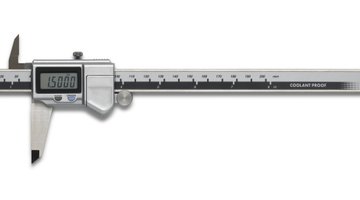How to Measure Connecting Rod Length
Connecting rods connect the pistons to the crankshaft in internal combustion engines. The length of the connecting rod compared to the travel of its stroke (called the connecting rod ratio) directly affects engine smoothness and performance. Most automobiles work best with a connecting rod ratio of 1.65 to 1.75.

A major step in identifying the ratio is to accurately measure the length of the connecting rod, which is the distance between the centers of the large and small holes in the rod.
-
Measure the inner diameter of the connecting rod's smaller hole using the caliper's inner jaws. Divide the number in half.
-
Measure the inner diameter of the connecting rod's larger hole, using the caliper's inner jaws. Divide the number in half. Add the halved small and large hole numbers together.
-
Measure the length of the metal between the end of the connecting rod and its inner diameter, taking the measurement as close to center of the rod end as possible. Perform this measurement on both ends, then add the numbers together. Add the total to the sum of the halved inner diameters.
-
Place the connecting rod on a flat surface. Measure the rod lengthwise from end to end with the caliper's outer jaws. Record the value.
-
Subtract the total length of the halved inner diameters and the metal wall on the ends of the rod from the total length of the connecting rod. This number will be the final measured length.
Tip
Operator "feel" for the caliper may slightly affect the inner diameter values, altering them by a approximately 1/1,000 inch. The differences in connecting rod sizes are typically between 3/20 inch and 1/5 inch, however, so 1/1,000-inch measurement variations are acceptable.
The Drip Cap
- Connecting rods connect the pistons to the crankshaft in internal combustion engines.
- Measure the inner diameter of the connecting rod's smaller hole using the caliper's inner jaws.
- Divide the number in half.
- Subtract the total length of the halved inner diameters and the metal wall on the ends of the rod from the total length of the connecting rod.
Writer Bio
Brad Chacos started writing professionally in 2005, specializing in electronics and technology. His work has appeared in Salon.com, Gizmodo, "PC Gamer," "Maximum PC," CIO.com, DigitalTrends.com, "Wired," FoxNews.com, NBCNews.com and more. Chacos is a frequent contributor to "PCWorld," "Laptop Magazine" and the Intuit Small Business Blog.
Photo Credits
- Don Farrall/Photodisc/Getty Images
- Don Farrall/Photodisc/Getty Images
More Articles



